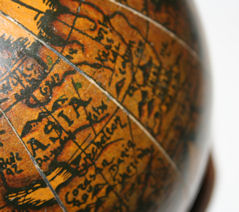 This past weekend I sat down and listened to frontline fundraisers and prospect researchers talk about how they work efficiently and respectfully to raise money in China. It felt long on a Saturday afternoon, but it was worth every minute. If you can find a viewing, go watch it!
This past weekend I sat down and listened to frontline fundraisers and prospect researchers talk about how they work efficiently and respectfully to raise money in China. It felt long on a Saturday afternoon, but it was worth every minute. If you can find a viewing, go watch it!
If not, here are some of my top takeaways from NEDRA’s Panel: Inside Chinese Philanthropy recorded from their May 30, 2014 event with researchers from Tufts, Harvard, and MIT, and international frontline officers from Tufts and MIT.
On Teamwork
- Put in place REALLY skilled fundraisers: the prospecting, cultivating and stewarding I heard talked about was very skillful and effective; this is not the time to practice
- Teamwork between research and fundraiser MORE important: a constant feedback loop between frontline fundraiser and researcher is necessary to tease information out of sources
- Develop a network of translators: you may be surprised how many people in your organization are fluent in other languages; these people can turn into keys unlocking the one piece of information that leads to a treasure chest full!
- Contact information is the most important piece of information and the most difficult to find
- A story was told about a frontline fundraiser sending cold emails in Southeast Asia and securing three $1M USD gifts for a specific initiative! (back to REALLY skilled fundraisers)
- Get data collection and entry correct, especially events that are actually attended (back to the importance of contact information)
On Research
- Create search tip checklists for each prospect: you don’t want to forget or make another researcher re-learn all the clever ways you found information on that prospect
- Capacity requires country context research: because there are often fewer hard asset numbers to gauge capacity, you need to get a feel for how the prospect stands in her own environment
- Names are so many different ways that it gets difficult (back to search tip checklists)
- News is the best source for information: Factiva lets you search multi-languages
- Access and connection is also key: they almost talked about relationship mapping, but didn’t
On Culture
- Parents: get them in the first year!
- This is the first generation of wealth: some may want to enjoy their wealth for a bit; don’t forget they grew up without luxuries like refrigerators; they are just reaching middle-age
- The wealthy are often followers: showing peer giving is helpful
- Attitude to U.S.: we appear very wealthy when they still have a lot of poverty; business and local pressures to support home projects; may want to show how their U.S. giving helps Chinese at home or abroad
- Government: there are restrictions on exchanging USD and a cap on giving; may also want to be anonymous or hide wealth; party members and government dominated firms are not going to give
On Patience
- Must be committed to cultivation over a long time: philanthropic culture is still transactional and local
- Some programs started in the late 1980’s/1990’s and just now gaining serious traction
Research Tools Mentioned
- WealthX
- Capital IQ
- ProQuest
- Lexis Nexis
- Forbes
- Financial Times
- Hurun’s Rich List
- Global Giving Initiative – list for leads
Extra:
Other Articles You Might Like
- White Paper Reveals Key info on Chinese HNWI and UHNWI living in US and Canada
- New Era of Philanthopy in China
- Is that name right? International prospect names in your database